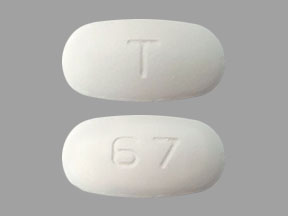
Niacin ER (antihyperlipidemic) Coupons & Savings Card – Discount Prices from $35.81
Generic for: Niaspan
My prescription
Edit
1000MG, Niacin ER (antihyperlipidemic) (90 Tablet Extended Releases)
Select pharmacy

CVS
$35.81
COUPON PRICE
Walmart
$40.40
COUPON PRICE
Walgreens
$42.66
COUPON PRICE
Albertsons
$45.25
COUPON PRICENiacin ER (antihyperlipidemic) savings card
Show this card to your pharmacist
CVS
$35.81
BIN
ID
PCN
GRP
019876
LH92B3ABB5
CHIPPO
LHX
Powered by
Niacin ER (antihyperlipidemic) dosage forms
Dosage Quantity Price from Per unit 500MG 1 Tablet Extended Release $2.71 $2.71 500MG 30 Tablet Extended Releases $8.85 $0.29 500MG 90 Tablet Extended Releases $28.06 $0.31 500MG 100 Tablet Extended Releases $30.18 $0.30 500MG 180 Tablet Extended Releases $36.44 $0.20 500MG 1000 Tablet Extended Releases $84.00 $0.08 750MG 90 Tablet Extended Releases $35.81 $0.40 750MG 100 Tablet Extended Releases $36.90 $0.37 750MG 180 Tablet Extended Releases $45.62 $0.25 1000MG 90 Tablet Extended Releases $35.81 $0.40
| Dosage | Quantity | Price from | Per unit |
|---|---|---|---|
| 500MG | 1 Tablet Extended Release | $2.71 | $2.71 |
| 500MG | 30 Tablet Extended Releases | $8.85 | $0.29 |
| 500MG | 90 Tablet Extended Releases | $28.06 | $0.31 |
| 500MG | 100 Tablet Extended Releases | $30.18 | $0.30 |
| 500MG | 180 Tablet Extended Releases | $36.44 | $0.20 |
| 500MG | 1000 Tablet Extended Releases | $84.00 | $0.08 |
| 750MG | 90 Tablet Extended Releases | $35.81 | $0.40 |
| 750MG | 100 Tablet Extended Releases | $36.90 | $0.37 |
| 750MG | 180 Tablet Extended Releases | $45.62 | $0.25 |
| 1000MG | 90 Tablet Extended Releases | $35.81 | $0.40 |
| 1000MG | 100 Tablet Extended Releases | $36.90 | $0.37 |
| 1000MG | 180 Tablet Extended Releases | $45.62 | $0.25 |
| 1000MG | 1000 Tablet Extended Releases | $135.00 | $0.14 |
Niacin ER (antihyperlipidemic) Warnings
When considering extended-release niacin (niacin ER) for managing high cholesterol, it's important to be aware of certain risks associated with its use. One significant concern is liver health; high doses of niacin ER have been linked to serious liver damage, including cases of acute liver failure. This risk is particularly pronounced when switching from immediate-release to sustained-release forms without proper medical guidance. Regular monitoring of liver function tests is essential during niacin therapy to detect any early signs of liver injury.
Another risk involves blood sugar levels. Niacin ER can cause elevations in blood glucose, potentially leading to new-onset diabetes or worsening existing diabetes. Individuals with diabetes or those at risk should have their blood sugar levels closely monitored while on niacin therapy.
Additionally, niacin ER may increase uric acid levels in the blood, raising the risk of gout attacks. Patients with a history of gout should use niacin cautiously and under strict medical supervision.
It's also important to note that niacin ER can cause a modest reduction in platelet count and a slight increase in prothrombin time, which may affect blood clotting. Individuals with bleeding disorders or those on anticoagulant therapy should discuss these risks with their healthcare provider.
Given these potential risks, niacin ER should be used under the guidance of a healthcare professional, with regular monitoring to ensure safety and effectiveness.
Niacin ER (antihyperlipidemic) Side Effects
Extended-release niacin, commonly prescribed to manage high cholesterol levels, can lead to several side effects. One of the most frequent is skin flushing, characterized by warmth, redness, itching, or tingling, particularly on the face, neck, and chest. This reaction typically diminishes over time. To mitigate flushing, it's advisable to avoid alcohol, hot beverages, and spicy foods near the time of taking the medication. Additionally, taking aspirin or a nonsteroidal anti-inflammatory drug (NSAID) about 30 minutes before niacin may help reduce this effect. Gastrointestinal issues are also common, including nausea, vomiting, diarrhea, and abdominal discomfort. These symptoms often improve as the body adjusts to the medication. Taking niacin with food can help alleviate stomach upset. More serious side effects, though less common, include liver damage, which may present as severe abdominal pain, yellowing of the skin or eyes, dark urine, or unexplained fatigue. Regular liver function tests are recommended to monitor for potential liver-related side effects. Niacin can also affect blood sugar levels, potentially leading to high blood sugar. Individuals with diabetes should monitor their blood sugar closely while on this medication. Additionally, niacin may increase uric acid levels, which can exacerbate gout in susceptible individuals. In rare cases, niacin can cause muscle problems, including unexplained muscle pain, tenderness, or weakness. If you experience any of these symptoms, it's important to contact your healthcare provider promptly. Before starting niacin, inform your healthcare provider of any existing health conditions, especially liver disease, kidney problems, heart disease, diabetes, or gout. Also, disclose all medications and supplements you're currently taking to avoid potential interactions. Always follow your healthcare provider's instructions regarding niacin dosage and administration. If you experience any concerning side effects, seek medical attention promptly.
Niacin ER (antihyperlipidemic) Interactions
When taking extended-release niacin to manage cholesterol levels, it's important to be aware of potential interactions with other medications and substances. These interactions can affect how niacin works and may increase the risk of side effects.
Statins: Combining niacin with statin medications, such as Atorvastatin or Simvastatin, can heighten the risk of muscle problems, including a serious condition called rhabdomyolysis. This risk is particularly notable when niacin is taken in doses exceeding 1,000 mg per day. If your treatment plan includes both niacin and a statin, your healthcare provider will monitor you closely for any signs of muscle pain, weakness, or tenderness.
Blood Pressure Medications: Niacin can enhance the effects of medications that lower blood pressure, potentially leading to blood pressure that is too low. This can result in dizziness or fainting. If you're on blood pressure medication, your doctor may adjust your treatment to prevent this interaction.
Diabetes Medications: Niacin may raise blood sugar levels, which can interfere with the effectiveness of diabetes medications. If you have diabetes and are prescribed niacin, it's important to monitor your blood sugar levels regularly and discuss any necessary adjustments to your diabetes treatment with your healthcare provider.
Alcohol: Consuming alcohol while taking niacin can increase the risk of liver damage and may worsen side effects like flushing and itching. It's advisable to limit or avoid alcohol intake during niacin therapy.
Bile Acid Sequestrants: Medications like Cholestyramine, used to lower cholesterol, can reduce the absorption of niacin. To minimize this interaction, it's recommended to take niacin at least 4 to 6 hours after taking a bile acid sequestrant.
Anticoagulants and Antiplatelet Agents: Niacin can affect blood clotting. When taken with blood thinners, such as Warfarin, there may be an increased risk of bleeding. Your doctor may need to monitor your blood clotting parameters more closely if you're using these medications together.
Other Considerations: Niacin can interact with various other substances, including certain antibiotics, thyroid medications, and supplements containing niacin. Always inform your healthcare provider about all medications and supplements you're taking to ensure safe and effective use of niacin.
Being aware of these potential interactions helps in managing your cholesterol effectively while minimizing risks. Regular communication with your healthcare provider is essential to tailor your treatment plan to your specific needs.
